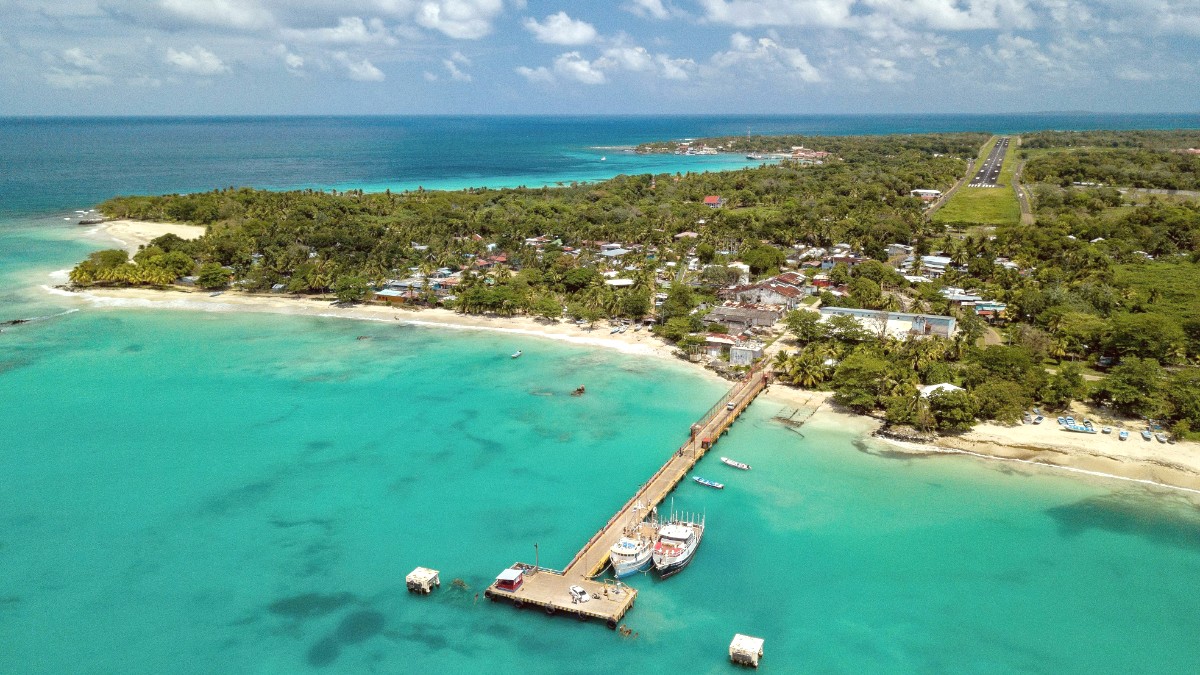
Caribbean Coast, Nicaragua
The cuisine is distinctly Afro-Caribbean, shaped by Creole traditions, British colonial history, and the sea's bounty. Seafood and coconut are staples.
ingredients include lobster, conch, various fresh fish, coconut milk (for Rundown and rice), plantains (tajadas, tostones), and root vegetables (yucca, taro, sweet potato). Flavors are typically mild, with garlic, onion, and bell peppers, and Scotch Bonnet for heat.
Often showcases very fresh, simple preparations of daily caught seafood, with "catch of the day" specials more prominent.
Offers slightly more variety in restaurant types, including more international options alongside local fare.
Both islands share a similar culinary base, highlighting the distinct Afro-Caribbean influence.
A quintessential Corn Islands stew, rich, savory, and slightly sweet. Coconut milk forms its base, with various seafood (fish, lobster, crab, conch) and root vegetables. Found at many local comedores and mid-range restaurants.
A true taste of the island's culinary heritage.
Freshly caught lobster is a highlight, often grilled, curried, or served with garlic butter. It is significantly more affordable here. Look for it at almost any restaurant, especially during lobster season.
A local delicacy not to be missed.
Freshly grilled or fried fish served with fried plantain slices (tajadas or tostones) and a simple salad. A common and satisfying meal.
A local favorite for a hearty meal.
Typically from July to March, offering the freshest and most abundant lobster, widely featured on menus.
No major food festivals specific to the islands, but local celebrations might feature special dishes. Inquire locally.
Fine dining establishments are limited. Yemaya Reefs on Little Corn Island provides an upscale experience with high-quality ingredients and a beautiful setting. Some resort restaurants on Big Corn Island also have refined settings.
Numerous options on both islands combine local and international dishes, with a strong focus on seafood. Embrace the local flavors for the most authentic experience.
Local "comedores" offer inexpensive and authentic meals. Tucked away family-run places often serve hearty, home-cooked food. Explore local markets for fresh ingredients.
Challenging but possible. Focus on dishes with rice, beans, plantains, and fresh vegetables. "Gallo Pinto" is a common vegetarian staple.
Communicate needs clearly. Many restaurants can prepare vegetable-based rice and beans or salads upon request.
Halal and kosher availability is extremely limited. Awareness of specific allergens like gluten is also limited.
Learn phrases in Spanish/English Creole for allergies. Focus on naturally gluten-free options like grilled fish, rice, and fresh vegetables. Online forums can offer advice.
Formal classes are limited. Informal demonstrations may be offered by guesthouses or local families if you ask.
Limited due to island size. Coconut processing is visible in local communities.
Some small guesthouses or locals may offer home-cooked meals for an authentic experience.
Offered by some restaurants/tour operators, featuring freshly grilled seafood on the sand.
Smaller, local eateries offer hearty, home-cooked meals and a chance to truly experience island life.
Look for hidden gems away from main tourist paths.
Engage with locals at markets or small shops to gain insights into their daily culinary practices.
Inquire about any special local events or dishes during your visit.
While formal tours are rare, an organic approach to food exploration will offer rich experiences. Engage with local vendors and small eateries.
For specific dietary inquiries, online travel forums and Facebook groups dedicated to the Corn Islands can connect you with other travelers' experiences and advice.
A popular spot offering a mix of local and international dishes, with a pleasant ambiance.
Well-regarded for its fresh seafood and local preparations.
Small, family-run eateries scattered around for authentic, inexpensive meals.
Inquire locally at guesthouses for opportunities to share a home-cooked meal, providing deep cultural immersion.
A chance to learn about island life firsthand.
Some restaurants or tour operators offer beach BBQs with freshly caught seafood grilled over an open fire on the sand.
A memorable dining experience under the stars.
Wander beyond main tourist areas to find authentic, family-run comedores for genuine island cuisine.
For specific dietary needs, use simple Spanish or Creole phrases to make your requirements known.
Many smaller eateries prefer cash, so carry small denominations.
Engaging with the local food culture here is a deeply rewarding experience. The emphasis on fresh seafood and coconut reflects the island lifestyle.